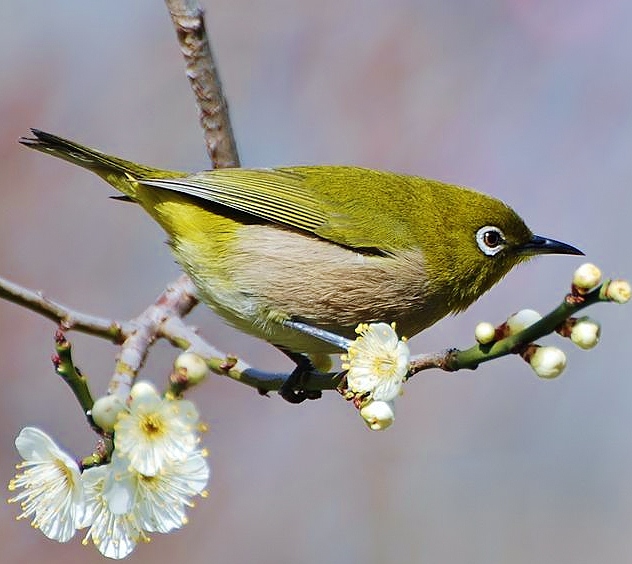 |
| (Photo from Wikipedia) |
Common name:
Japanese white-eye (en); olho-branco-do-Japão (pt); zostérops du Japon (fr); anteojitos japonés (es); Japanbrillenvogel (de)
Taxonomy:
Order Passeriformes
Family Zosteropidae
Range:
This species is found breeding in Japan, South Korea, China, Taiwan, Vietnam and Laos. Some populations migrate south to winter in Myanmar and Thailand. The Japanese white-eye has been introduced to Hawaii.
Size:
These birds are 10-12 cm long and weigh 10-13 g.
Habitat:
Japanese white-eyes are found in temperate forests, moist tropical and sub-tropical forests, rural gardens and in urban areas.
Diet:
They mostly glean small invertebrates from foliage, namely beetles, fly larvae and spiders, but will also take seeds, nectar and fruits.
Breeding:
The Japanese white-eye can breed almost all year round, varying between different parts of its range. The nest is a neatly woven cup, made of grass, plant material, string, tin foil, leaves, mosses, and attached to a fork in a branch with spiders webs. There the female lays 2-5 pale blue eggs, which are incubated by both parents for 11 days. The chicks are fed by both parents and fledge 10-12 days after hatching, but remain with their parents for another 2-3 weeks.
Conservation:
IUCN status – LC (Least Concern)
This species has a very large breeding range and is described as common. The population trend is difficult to determine because of uncertainty over the impacts of habitat modification on population sizes.







